Lawn Envy: 20 Essential Tips to Keep Your Lawn Healthy and Looking Beautiful
Imagine stepping outside to the welcoming view of your lawn; it’s lush, green, and meticulously manicured, the envy of the neighborhood. This verdant paradise didn’t happen by chance. Achieving such perfection involves more than just occasional watering and mowing. Let’s dive into some essential lawn maintenance basics to keep your outdoor space not just surviving, but thriving.
Regular Mowing: Keep Your Grass at Its Best
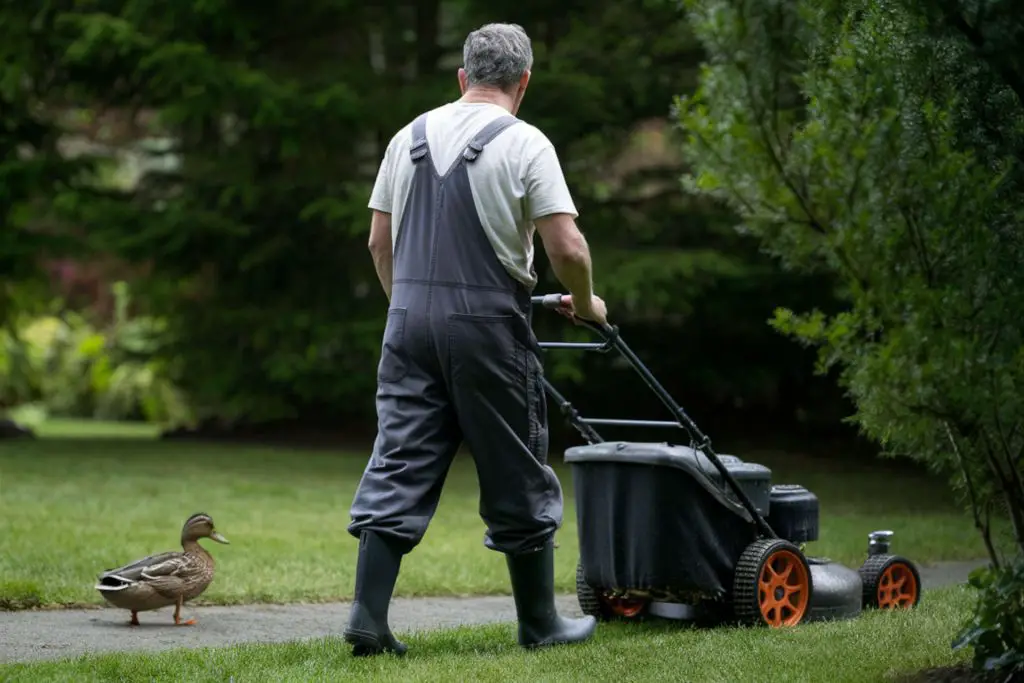
Mowing is not merely about keeping your grass short; it’s an art that balances aesthetics with the health of your turf. To ensure your lawn remains healthy and thick, it’s crucial to mow at the optimal height tailored to your specific grass type.
Maintaining a sharp lawn mower blade is imperative as it makes clean cuts that heal quickly and deter pests and diseases. Stick to the one-third rule—never remove more than one-third of the grass blade in a single mowing session. This practice encourages stronger root development, enhancing your lawn’s resistance against weeds and drought. Remember, consistent mowing not only cultivates a lawn that’s a pleasure to look at but also a robust one that’s less prone to problems.
Vary Your Mowing Practices Depending on Time of Year
Time of year is also important consideration when mowing. In the spring when the grass is beginning to regather it strength it is weakest. Resist the urge to cut it short to its summer length, Instead just trim the trim the top for the first six weeks of the season.
When the warmer weather arrives the grass will have much stronger growth and you can look to gradually take the length down further. It is always advisable though not to have your finished length too short. As a result you should notice you have much healthier grass.
Water Wisely: The Secret to Resilience
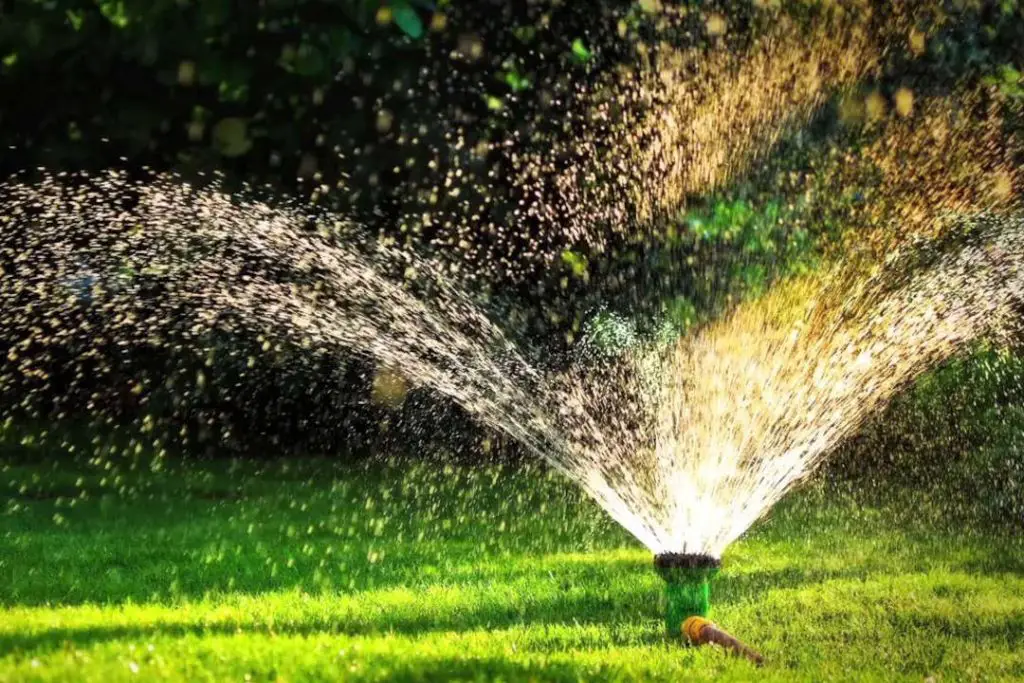
Knowing when and how much to water is crucial for a healthy lawn. The best approach is to water deeply but infrequently, which encourages the roots to grow deeper into the soil, making your grass more resilient during dry spells. Aim for about an inch of water per week, whether from rainfall or your water sprinklers, and always water early in the morning to reduce evaporation losses.
A good rule of thumb is to keep the soil moist to about 6 inches deep, which can be checked with a simple garden fork. Following these lawn watering tips can lead to a more drought-resistant and vibrant lawn.
Use Fertilizers Appropriately: Boost Your Grass’s Diet
Fertilization is a key element in achieving a lush, green lawn. Selecting the right lawn fertilizer type tailored to your lawn‘s specific needs can dramatically improve its health and appearance. Apply fertilizers during the peak growing seasons—spring and fall—for optimal absorption. Be sure to follow the lawn fertilizer manufacturer instructions closely to avoid over-saturation and nutrient runoff, which can be harmful to the environment. A balanced feeding schedule supports vigorous growth and maintains the lawn’s lushness.
Aerate the Soil: Let Your Lawn Breathe
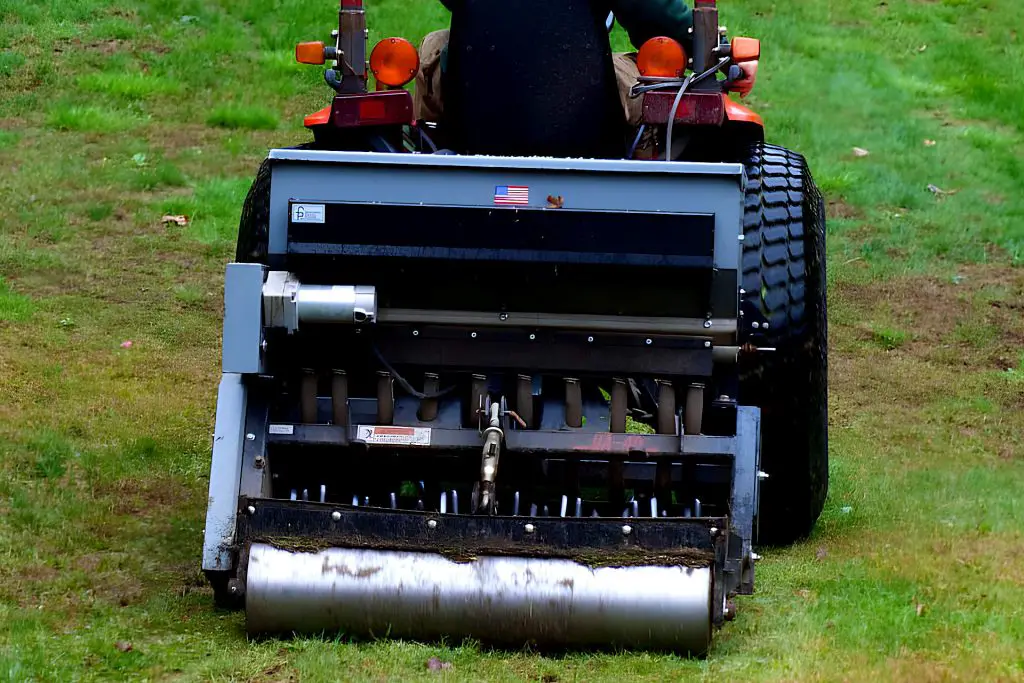
Over time, soil under your lawn can become compacted, making it difficult for air, water, and nutrients to penetrate the root zone. Aerating the soil is a crucial step in lawn care maintenance. It involves creating small holes in the soil to alleviate compaction and improve the flow of essential resources to the roots.
Lawn aeration benefits your grass by enhancing oxygen circulation, improving water intake, and boosting fertilizer uptake. This process should be done at least once a year, using a lawn aerator rental machine for best results, particularly if your lawn experiences heavy foot traffic or is a clay-heavy soil.
Control Weeds: Stay Ahead of Unwanted Guests
Effective weed management is critical to maintaining the health and beauty of your lawn. Start with pre-emergent herbicides to prevent weed seeds from germinating and becoming a bigger problem. For those weeds that do sprout, lawn weed spot treatment is a precise way to deal with invaders without harming your grass.
Regular lawn weed control methods, including both chemical treatments and hand pulling, ensure that your lawn remains pristine and less hospitable to future weed infestations. Remember, a thick, well-maintained lawn is your best defense against weeds.
Overseed: Thicken Your Lawn
Bare spots or thin areas? Overseeding can help improve the density and appearance of your lawn, especially for cool-season grasses in the fall. This process involves spreading new grass seed over existing turf, a technique supported by lawn seed sowing rate guidelines.
For best results, combine overseeding with top dressing to provide the seeds good soil contact and ensure better germination. This practice not only fills in unsightly patches but also enhances the overall health of your lawn by introducing newer, more disease-resistant grass varieties.
Maintain pH Balance: Soil Health is Key

The pH level of your soil dramatically affects lawn health. Testing your soil’s pH annually is essential to determine if you need to adjust it to suit the needs of your grass type. For soils that are too acidic, applying lime can help neutralize the acidity. In contrast, sulfur may be needed to correct alkaline soils.
Keeping the soil pH balanced ensures that nutrients are available to your lawn, promoting healthier growth and lawn lushness. Adjusting your lawn’s pH can prevent soil sickness and make your maintenance efforts more effective.
Choose the Right Grass: Match Your Climate
Choosing the right type of lawn grass is fundamental to lawn care success. Different species thrive under varying conditions of sunlight, temperature, and moisture. By selecting a grass type that is well-suited to your region’s climate and your yard’s specific conditions, you can significantly reduce maintenance needs and enhance your lawn’s health and appearance. For instance, cool-season grasses like Kentucky bluegrass and fescue excel in northern climates, while warm-season grasses like Bermuda and Zoysia are perfect for southern regions. Consulting a lawn care specialist can help you make the best choice for your landscape.
Clean Up Leaves: Prevent Disease and Thatch
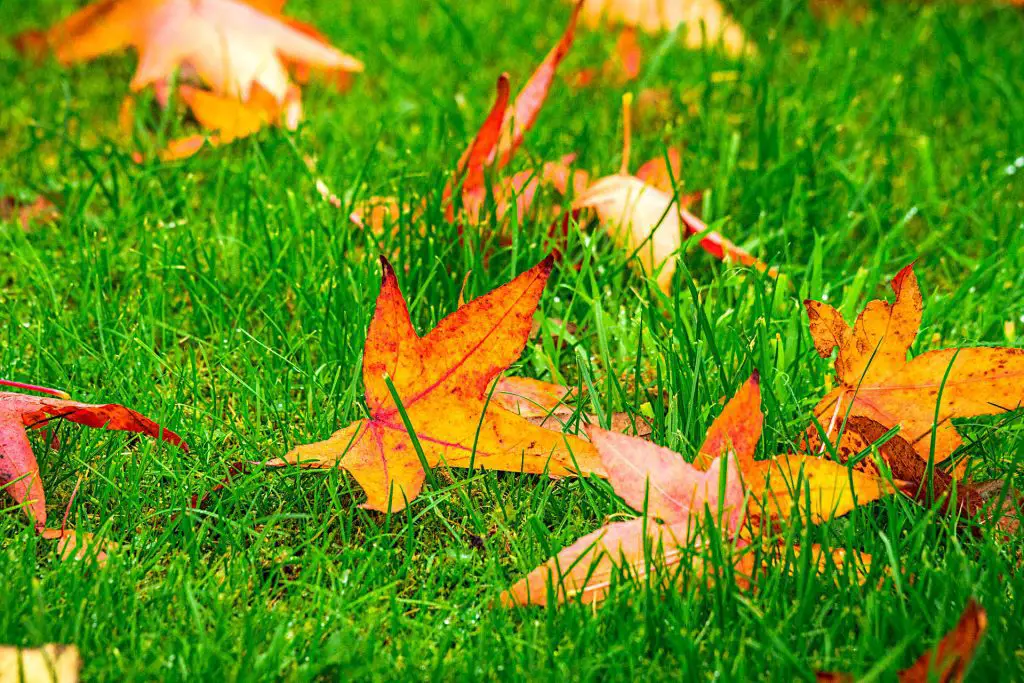
A simple yet critical task for maintaining a healthy lawn is the regular removal of leaves and debris. Layers of leaves can block sunlight and trap moisture, creating a breeding ground for diseases and pests. Utilize a garden fork or rake to clear away leaves, especially during the autumn months. This not only helps prevent lawn diseases but also reduces the formation of thatch, a layer of dead organic matter that can suffocate your grass. Regular cleanup keeps your lawn breathing well and looking its best.
Pest Control: Guard Against Invaders
An integral part of lawn maintenance is vigilant pest management. Monitor your lawn for signs of insect damage, which might include discolored grass, bare patches, or unusually active bird activity. Applying the right lawn moss killer or insecticide at the first sign of trouble can prevent minor issues from becoming widespread problems. It’s also wise to implement natural controls, such as attracting beneficial insects that prey on lawn pests. Regular lawn care maintenance routines that include monitoring and treating for pests help ensure your grass stays vibrant and healthy.
Disease Management: Stay Vigilant for a Healthy Lawn
Keeping an eye on the health of your lawn involves more than just admiring its lushness. Be proactive in spotting signs of lawn diseases, which can range from small discolored patches to widespread thinning. Early detection is key to effective treatment, often involving fungicides or changes in cultural practices such as watering and mowing. Implement lawn disease management strategies regularly to prevent issues from taking root, preserving the health and appearance of your turf.
Rake to Detangle: Essential for Air and Nutrient Flow
A light raking can do wonders for your lawn, especially when it comes to managing thatch buildup. Thatch, a layer of dead organic material that can accumulate between the soil surface and grass blades, impedes water, nutrients, and air from reaching the roots. Use a garden rake to gently but effectively remove this layer without harming your grass. This simple action helps improve nutrient uptake and water penetration, vital for a thriving lawn.
Use Organic Materials: Enrich Your Lawn Naturally
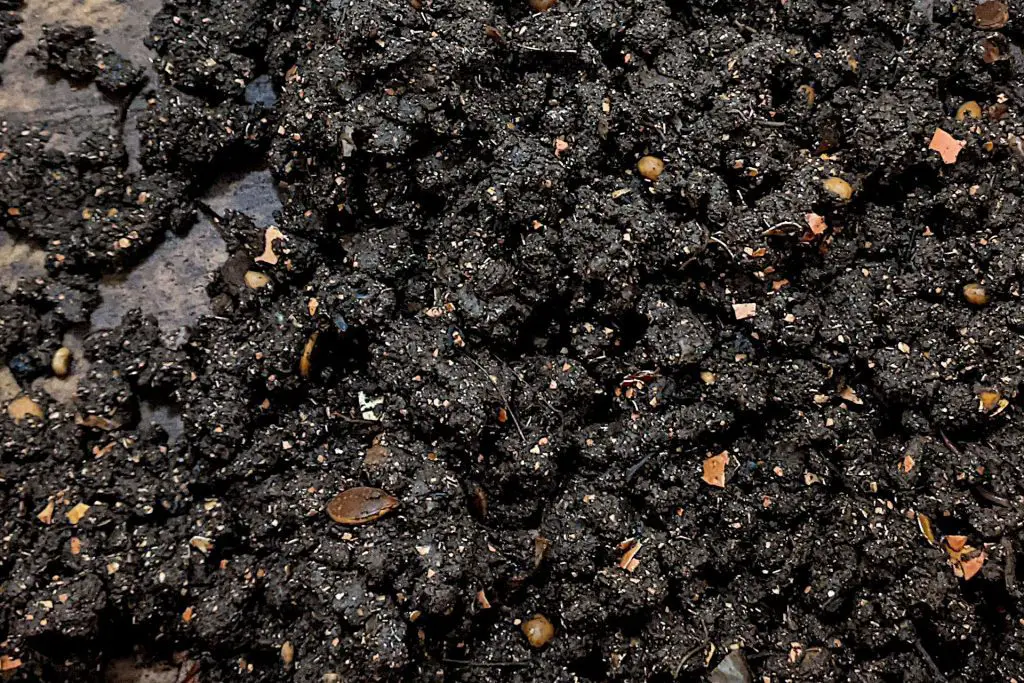
Integrating organic materials like compost, earthworm casting or mulch into your lawn care routine not only enhances soil structure but also boosts fertility naturally. Applying a thin layer of compost across your lawn can introduce beneficial microorganisms and nutrients, promoting healthier growth and greater resilience against stress. This method of lawn top dressing also aids in moisture retention and disease prevention, offering a long-term benefit to the overall ecosystem of your yard.
Proper Equipment Maintenance: Sharpen Those Blades
Keeping your lawn mower and other garden tools in top condition is crucial for maintaining a healthy lawn. Sharp mower blades make clean cuts, which are less stressful to grass and help prevent disease transmission. Regularly clean your equipment to avoid spreading soil pathogens or weed seeds across your lawn. This practice not only ensures the longevity of your tools but also contributes significantly to the appearance and health of your lawn.
Irrigation System Check: Ensure Optimal Watering
A well-functioning irrigation system is vital for uniform lawn watering. Periodically check your system for any leaks, blockages, or misaligned sprinkler heads. An efficient system will distribute water evenly, preventing over-saturation in some areas while others remain dry. Regular maintenance of your sprinkler irrigation system ensures that your lawn receives the right amount of water at the right time, promoting consistent growth and reducing water waste.
Seasonal Cleanup: Prepare for the Changing Seasons
As seasons change, so do the needs of your lawn. Seasonal cleanup is essential to remove leaves, twigs, and other debris that accumulate and can smother your grass. This cleanup prevents lawn diseases and pest infestations, which are more likely to occur in unkempt conditions. Additionally, removing winter debris in early spring clears the way for new growth, ensuring your lawn starts the season strong and healthy.
Monitor Shade: Light is Crucial
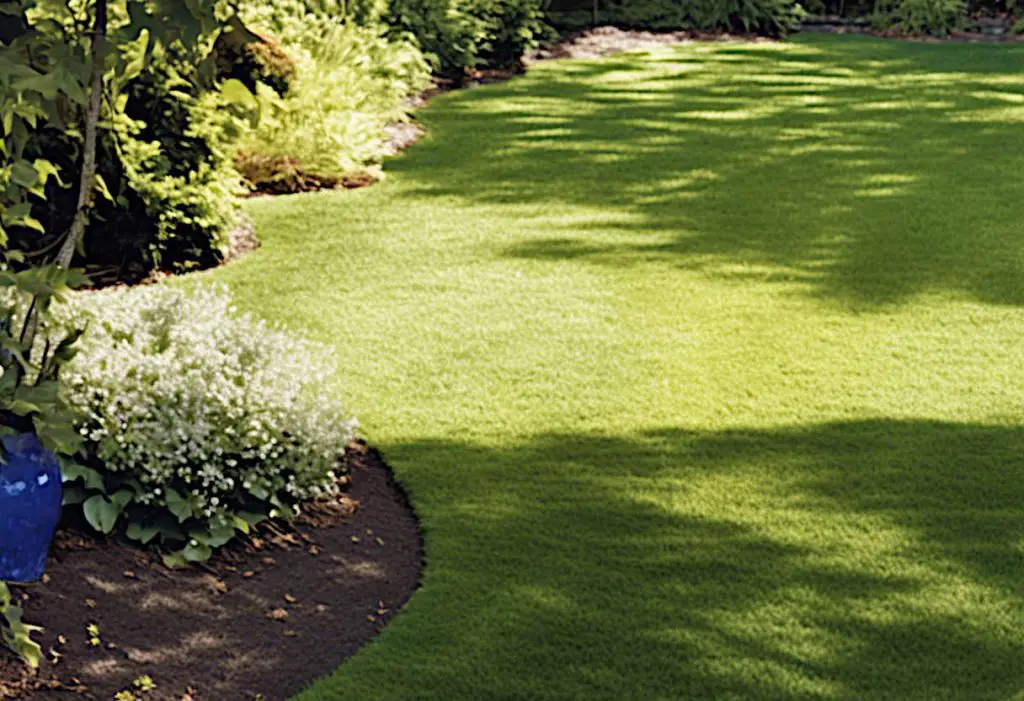
Excessive shade can hinder the growth of your lawn by limiting sunlight, which is essential for photosynthesis. Prune trees and shrubs to manage the amount of shade cast on your grass, ensuring that all areas of your lawn receive sufficient light. This practice not only promotes even lawn growth but also prevents the establishment of moss, which thrives in damp, shaded areas.
Conserve Water: Embrace Sustainability
Water conservation is increasingly important in lawn care. Utilizing rain barrels to collect runoff for irrigation is an excellent way to reduce your environmental footprint while maintaining a lush lawn. This method ensures that you have an additional water supply during dry spells, and it helps manage lawn watering frequency and depth more sustainably.
Edge Regularly: Define Your Space
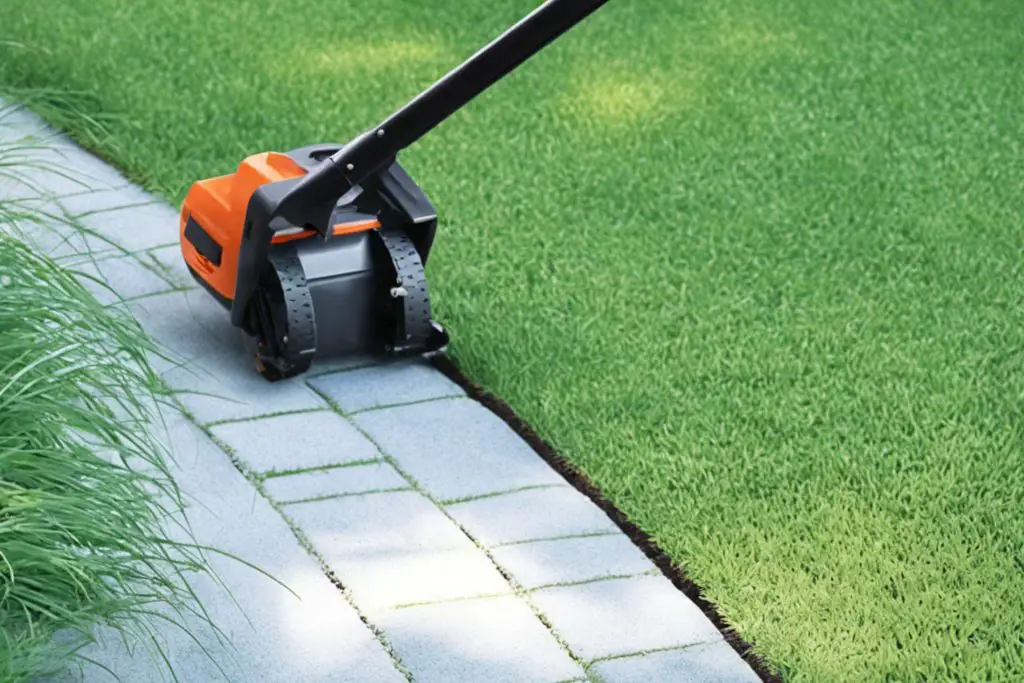
Edging your lawn regularly creates clean, sharp lines that define your garden and prevent grass from invading flowerbeds or pathways. This finishing touch not only enhances the overall aesthetic appeal of your yard but also makes maintenance easier. Employ lawn edging techniques to keep everything looking neat and tidy, reinforcing the structure of your garden.
How to Make Your Grass Greener
Achieving a lush green lawn hinges on optimizing chlorophyll production in grass. All the tips that we have detailed above will help toward this end. In particular, regular soil testing is essential to identify nutrient needs, with a focus on nitrogen for growth and iron to deepen the green color. Iron should be applied in chelated form to enhance absorption, especially in high pH soils. Select grass types like Kentucky bluegrass for naturally deeper greens and maintain your lawn with proper mowing, watering, and aeration practices to promote healthy chlorophyll levels.
We have a more detailed discussion on making your grass greener where we do into more detail what exactly are the best practices for achieving that lush green look across the whole of your lawn.
Educate Yourself: Continuous Improvement
The best lawn care specialists are those who continually seek knowledge and adapt their practices based on the latest research and regional tips. Stay informed about lawn care maintenance trends, new technologies, and organic methods that can improve the health and appearance of your lawn. By staying educated, you can apply the most effective techniques that cater specifically to the needs of your turf, ensuring long-term health and beauty.
